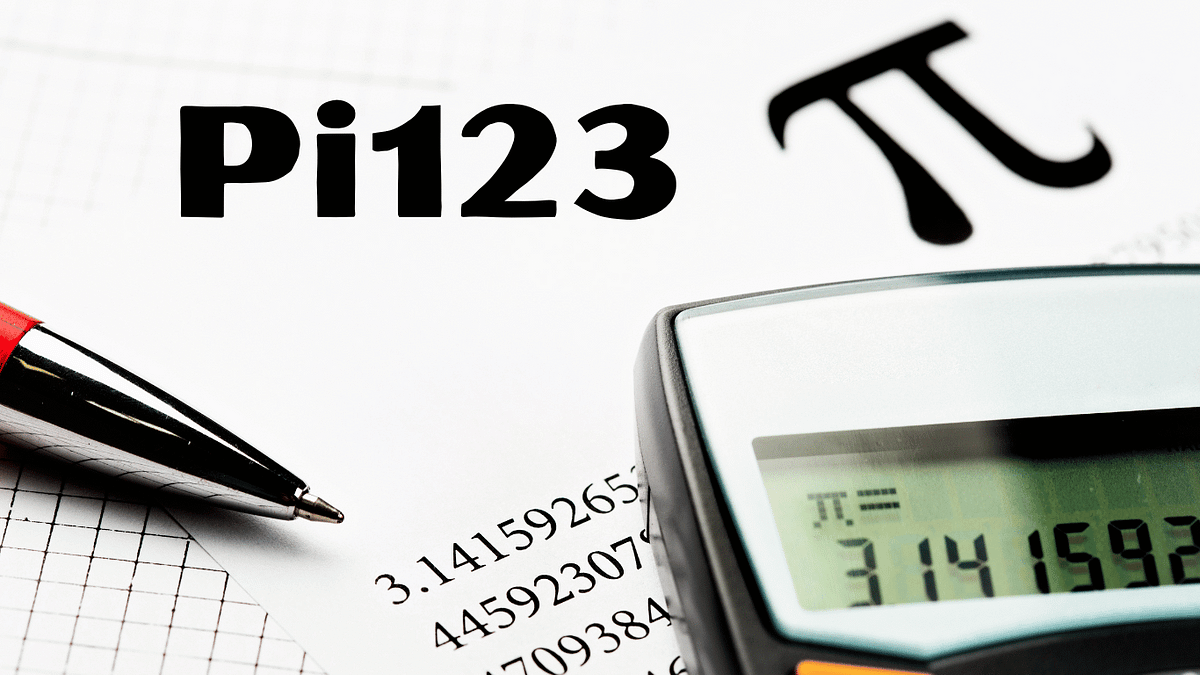Pi123 is not just a random number; it’s a symbol of a new wave of thought in technology, software development, and artificial intelligence. In a world where numbers govern everything from our daily routines to the most advanced scientific discoveries, certain mathematical constants have proven to be the foundation of everything we know. One such number is Pi (π), a transcendental number that has intrigued mathematicians, engineers, and scientists for centuries. But what happens when you take this timeless symbol of mathematics and integrate it into modern technology and innovation? Welcome to the world of Pi123, a modern interpretation of Pi’s influence on technological development and a unique perspective on how numbers shape our understanding of reality.
By understanding Pi’s significance in mathematics and extending that knowledge into modern applications, Pi123 showcases how important constants like Pi can revolutionize everything from algorithms to engineering, making our digital age more efficient and sophisticated.
Contents
Understanding Pi: The Foundation of Pi123
To appreciate the significance of Pi123, we must first understand Pi itself. Pi (π) is the ratio of the circumference of a circle to its diameter. This number, approximately 3.14159, is an irrational and transcendental number, meaning it cannot be expressed as a simple fraction and its decimal expansion goes on infinitely without repetition. Pi’s importance lies in its fundamental role in geometry, particularly in understanding circles and other curved structures.
Pi has been used in a wide range of applications, from calculating the orbits of planets to understanding the behavior of waves. Its reach extends far beyond simple geometry, influencing fields such as physics, engineering, and computer science. The concept of Pi123 builds on this foundation, demonstrating how numbers can be used in advanced technological applications, particularly in the realms of artificial intelligence and machine learning.
The Evolution of Pi123 in Technology
The idea of Pi123 stems from the need to optimize complex mathematical computations in technology. With advancements in artificial intelligence, big data, and cryptography, it has become clear that certain numerical constants play an essential role in improving the efficiency of algorithms. Pi123, therefore, is a step toward refining those algorithms to make them more accurate and computationally less expensive.
Pi123 can be seen as a symbolic representation of how technology relies on constants to function smoothly. In machine learning algorithms, for instance, Pi123 could be used as a tuning parameter to achieve better convergence rates, especially when dealing with high-dimensional data. In software engineering, Pi123 can be implemented to solve optimization problems, ensuring that computational resources are used efficiently.
In cryptography, where numbers are essential in encoding and decoding information, Pi123 offers potential for developing more secure algorithms. Since cryptographic systems often rely on prime numbers and number theory, the irrational nature of Pi—and by extension, Pi123—can be utilized to create random and complex key generation systems, making them harder to crack.
Real-World Applications of Pi123
Now that we understand the mathematical significance and technological potential of Pi123, let’s explore some real-world applications where this concept can revolutionize various fields.
1. Artificial Intelligence and Machine Learning
One of the most promising areas for Pi123 is in artificial intelligence (AI) and machine learning (ML). These fields rely heavily on optimization techniques, where constants like Pi often find practical applications. For example, in gradient descent algorithms, which are used for training machine learning models, Pi123 can serve as a unique tuning parameter that speeds up the convergence process.
Pi123 could also improve the accuracy of deep learning models by acting as a regularization parameter. Regularization helps prevent overfitting, a common problem in AI models where the system performs well on training data but poorly on unseen data. By incorporating Pi123 into the regularization terms of a model, we could develop more robust AI systems that generalize better across different datasets.
2. Data Compression
In the world of data storage, compression algorithms are crucial for reducing the size of files without losing essential information. Pi123 can be applied to create more efficient compression algorithms, especially in cases where large datasets are involved. By utilizing the non-repetitive nature of Pi and combining it with the principles of Pi123, we can develop algorithms that minimize data redundancy and improve storage efficiency.
3. Blockchain and Cryptography
Blockchain technology, which underpins cryptocurrencies like Bitcoin, relies on complex mathematical operations to ensure the security and integrity of the network. Pi123 can play a role in the development of new cryptographic techniques that are more secure and resistant to attacks.
By incorporating Pi123 into encryption algorithms, developers can create systems that are more difficult to hack. The infinite and non-repeating nature of Pi makes it an excellent candidate for generating random sequences, which are essential for cryptographic keys. This could lead to a new generation of more secure blockchain protocols.
4. Physics Simulations and Engineering
In the field of physics, Pi is already used extensively in simulations involving waves, quantum mechanics, and relativity. Pi123 offers a new way of refining these simulations to make them more accurate and computationally efficient. For example, when modeling the behavior of particles in quantum mechanics, Pi123 could be used to improve the precision of calculations, leading to more realistic simulations of atomic and subatomic processes.
In engineering, Pi123 could help optimize structural designs, particularly in fields like aerospace and civil engineering, where precise calculations are necessary for ensuring the safety and functionality of structures. By applying Pi123 to engineering problems, we can develop more efficient methods for solving complex equations that involve circular or elliptical structures.
The Future of Pi123: Potential Innovations
As the world becomes increasingly digital, the importance of numerical constants like Pi123 will only continue to grow. Future innovations may involve the integration of Pi123 into quantum computing algorithms, where numbers play a critical role in processing information at the quantum level.
In quantum computing, Pi123 could be used to optimize quantum algorithms, making them faster and more efficient. By reducing the complexity of these algorithms, we could accelerate the development of practical quantum computers, which have the potential to solve problems that are currently unsolvable by classical computers.
Additionally, Pi123 could find applications in the development of new materials through computational chemistry. By using Pi123 in simulations of molecular structures, scientists could discover new compounds with unique properties, leading to advancements in fields like nanotechnology and drug discovery.
Conclusion: The Timeless Relevance of Pi123
In conclusion, Pi123 represents the fusion of ancient mathematical knowledge with modern technological innovation. By leveraging the properties of Pi in new and creative ways, Pi123 has the potential to revolutionize fields ranging from artificial intelligence to cryptography. As we continue to explore the vast possibilities of Pi123, one thing remains clear: numbers, especially those as fundamental as Pi, will always be at the heart of technological progress.
The future of Pi123 is bright, with endless opportunities for discovery and innovation. Whether we are optimizing algorithms, securing data, or simulating the universe, Pi123 offers a powerful tool for unlocking the mysteries of the digital world. As technology continues to evolve, the significance of Pi123 will undoubtedly become even more apparent, solidifying its place in the pantheon of mathematical constants that shape our understanding of reality.
you may also read usaupnetwork.





